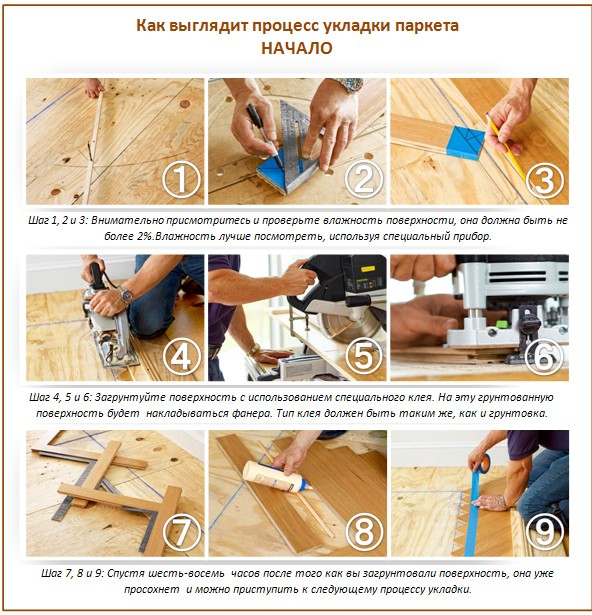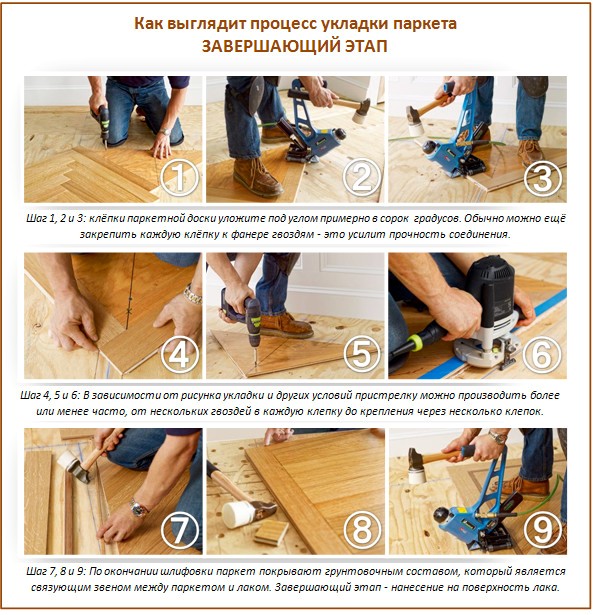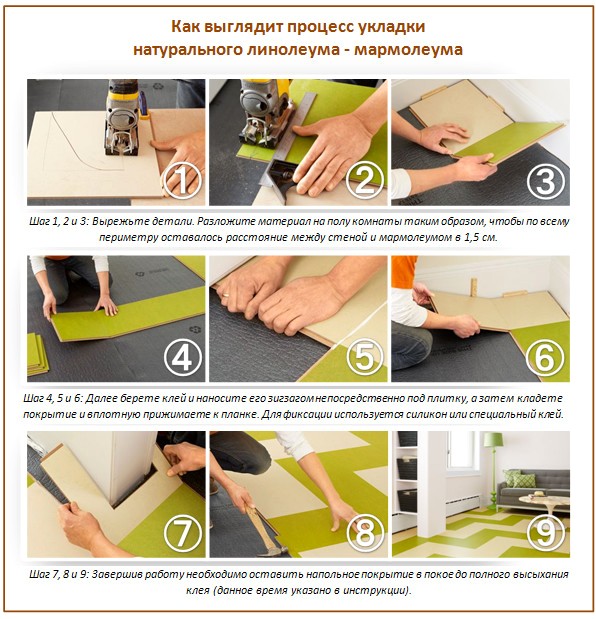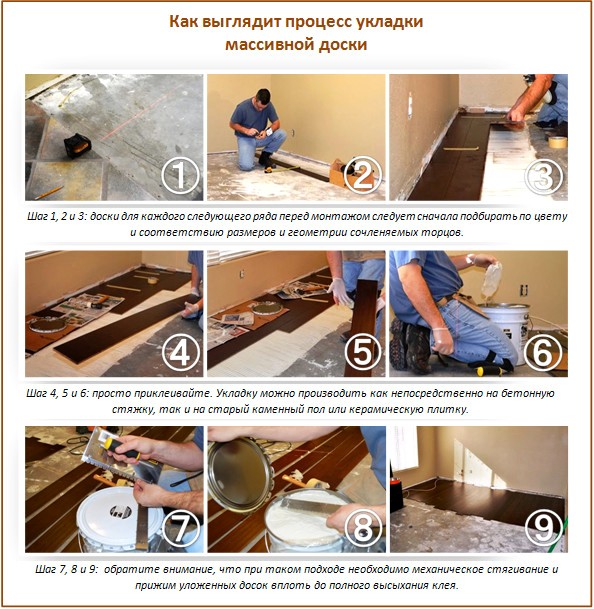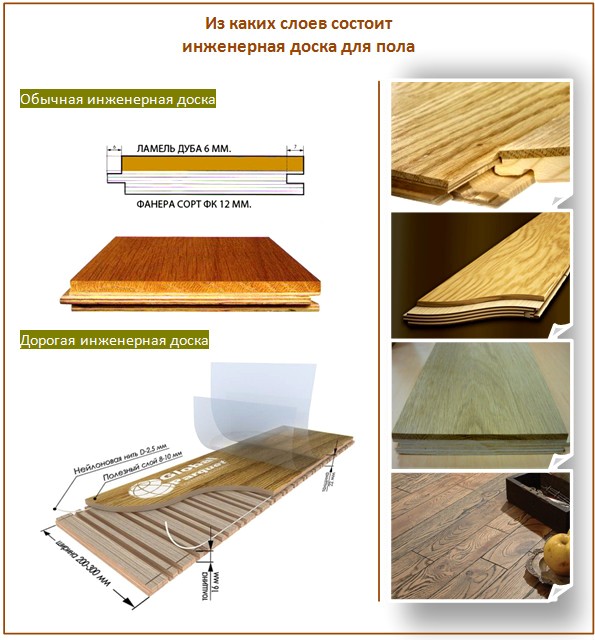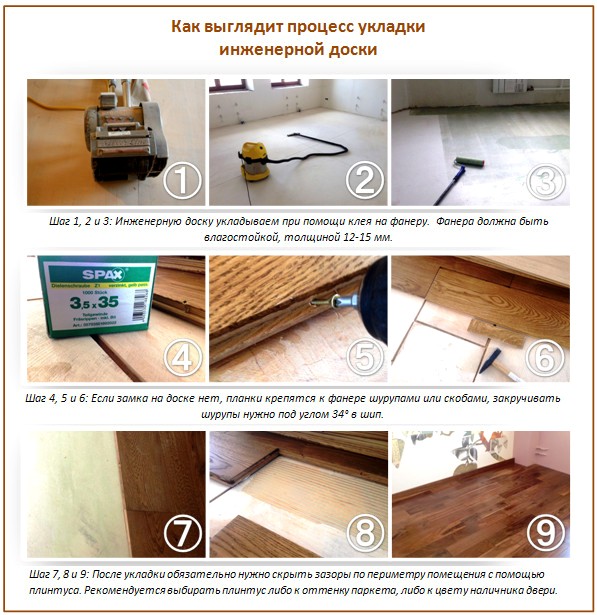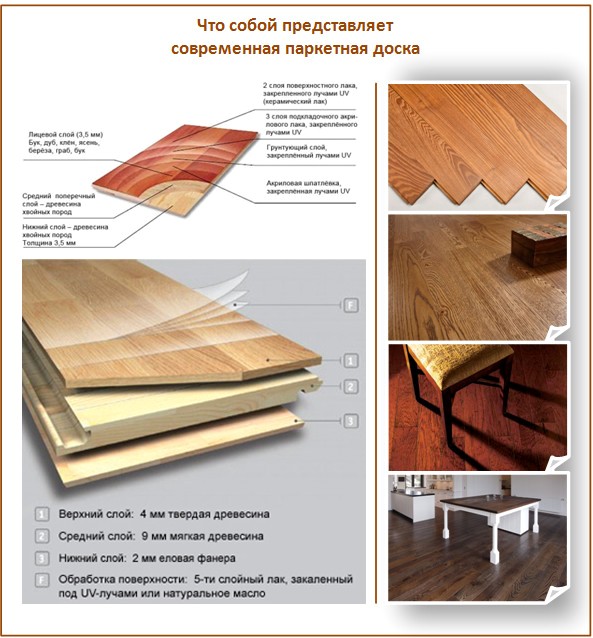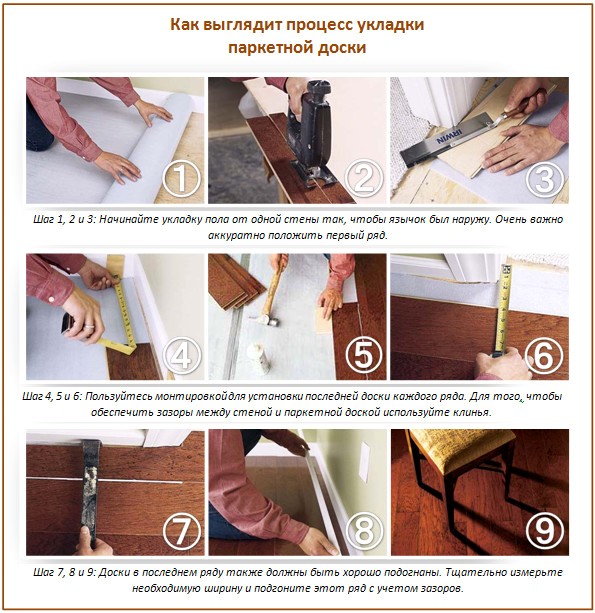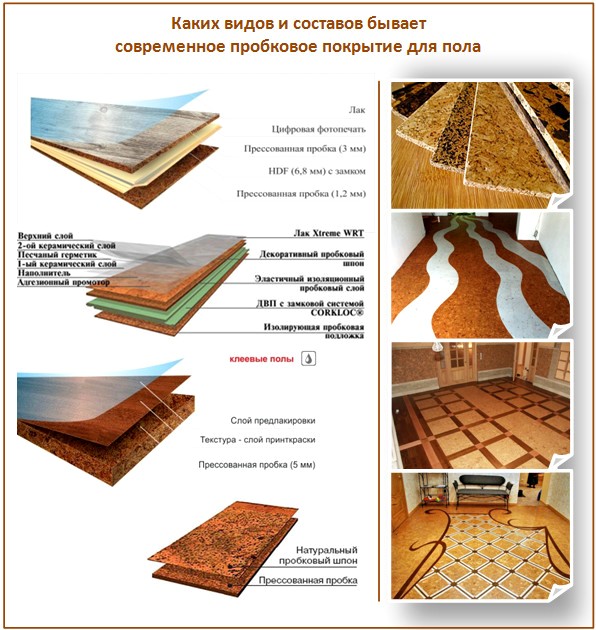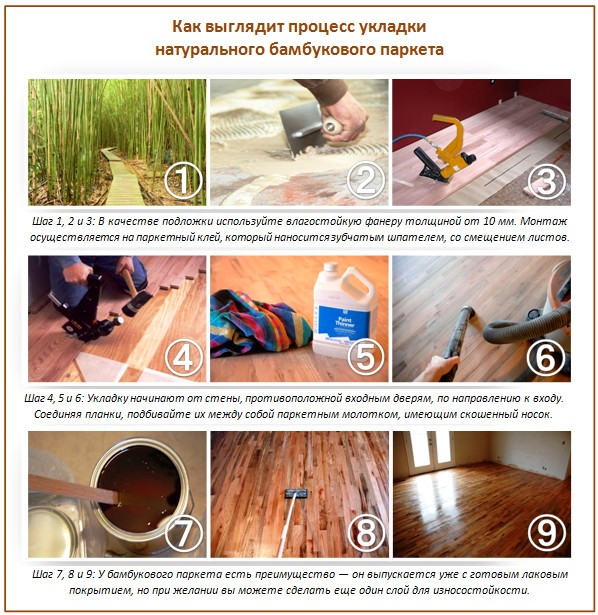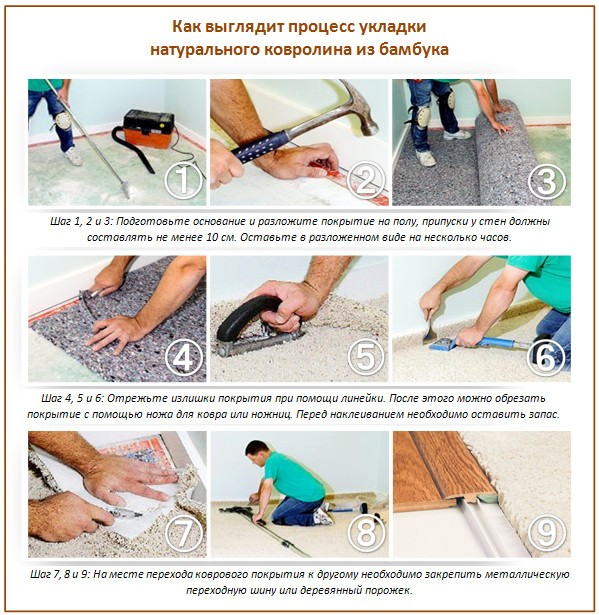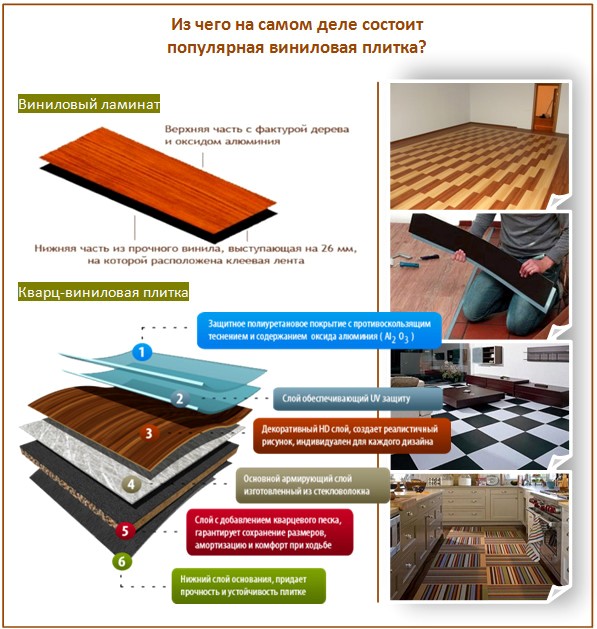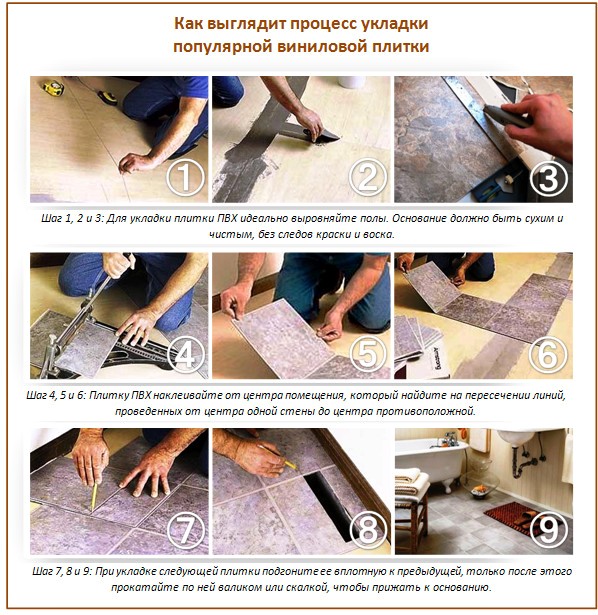Choosing the most environmentally friendly and safe flooring
For many modern citizens, the only island of coziness, comfort and safety is not a city park or entertainment complexes, but their own house or apartment. And it should be safe in every sense: starting from physical security, and ending with complete health benefits. But is it really so? ...
Content
Naturalness = environmental friendliness?
Just let's get right to the concepts. “Environmental friendliness” is not at all the same as “naturalness”, although often natural houses with natural decoration materials are one of the most environmentally friendly. The concept of environmental friendliness has now become a gold mine for entrepreneurs. After a long barrage of negative information about the dangers lurking in our house in the form of new furniture, flooring or windows, most people are ready to give everything in order to replace the “silent killers” with environmentally friendly walls, furniture and floors. And clay floors in the cottage, firewood walls in a country house and pebbles underfoot in the shower no longer cause laughter.
So what is green flooring? Speaking in the official language, this property of all structural elements does not emit harmful substances, especially during operation. This provision is even spelled out in the IBC 31-12.2007. But keep in mind that even the most often natural coating has to be put only on glue - and this is not the same environmental friendliness. That’s why we’ll understand everything in detail now - both in coatings and in methods of laying them.
Is there any need to worry at all?
Just imagine for a moment: in one room you lay the floor of natural wood and cover it with special environmentally friendly oil, and in the second - the floor covering, which for some part consists of wood shavings, and the rest of its contents - some then garbage generously seasoned with glue. But in the end result, both rooms will look beautiful. But after only a few years or even months of life in the second room, you will notice some strange cough, kidney problems, constant headaches and chronic insomnia. If this room is not an bedroom, but an office, then there will still be no mood in it.
A couple of years ago, domestic ecologists decided to measure air pollution in the forest, on the ring and in a simple metropolitan apartment. The results were striking: it was in a well-furnished modern housing with vinyl wallpaper and a beautiful laminate on the floor that there were many more toxic substances than behind a busy highway. That is why it is so important, when creating your own corner of coziness, to make it as safe as possible for health, especially when it comes to the younger generation.
Formaldehyde, which is especially intensively released when heated, is also dangerous for our body. They installed a cheap laminate on the warm floor and started to hurt? Perhaps it’s just the repair. And if you still used glue, and especially did not choose which one - what can you do.
There is another danger that few know about: in the manufacture of cheap laminate, melamine is often used. These are colorless crystals, which also sometimes add to some types of varnishes and adhesives. Thanks to this chemical, the laminate becomes more shockproof and waterproof, but only in a cheap laminate it is much more. What is much worse for health.
You may be shocked that even natural wood can be toxic to your home. After all, a tree is a living material, like any living material it is able to accumulate in itself not only toxins, but also radiation. Moreover, it accumulates continuously all the time while it is growing. Therefore, it is dangerous to make floors from plantings near highways, radioactive places and where garbage is burned. And well, if you yourself order floorboards from a familiar carpenter and know exactly where he gets them from.
Please also note that even the natural resins that wood releases can be unsafe. For example, pine resin is not spared even by carbide brazing of woodworking tools (which carpenters constantly encounter). That is why it cannot be considered that wooden floors are the most environmentally friendly. And natural wood emits formaldehyde - however, in scanty amounts. So, according to the WHO, in air the natural background of this substance reaches 0.001-0.0005 mg / m.
It is curious to observe the lifestyle and addiction of famous interior designers. The idea is that their house should resemble a certain space station in style, and the decoration materials should even amaze the imagination with their unusual and courage. But in reality it often turns out that such crazy ideas of the gurus are embodied exclusively in their projects for other people's houses, offices and places of entertainment, and they create home comfort in a completely different way. Usually this is some kind of old-fashioned style, country, or even handmade, right down to every little thing. And the bedroom of one of the designers is especially surprising: stone walls, a real fireplace, and a floor from a clean raw board. Why is that? Because in such an environment, living, breathing, and creating is much easier.
Is Chinese harmful?
Interestingly, 10-15 years ago, in the United States, Chinese flooring was very popular because of its price. But quickly enough, the population had suspicions about the environmental friendliness of the acquisitions and the samples were transferred for official examination. As it turned out, cheap Chinese floors were indeed the cause of hypertension, hormonal disorder, and even impotence in some people. As a result, such products were banned for use for some time in residential premises. But Chinese manufacturers quickly tweaked some parameters and gained the necessary trust. However, since that time, such products in those parts are still reluctant to acquire.
Although today many chinese technology cleaner and safer than the same overseas, you only need to understand them. Indeed, modern methods of manufacturing laminate plates under special conditions reject unnecessary and dangerous substances, and even varnishes with glue have become much more neutral, just keep that in mind.
The fact is that the highest-quality Chinese laminate, which can give odds to the European one, is almost not supplied to Russia: its price will no longer be low enough to successfully compete in the domestic market. But among what is, you can find some good options.
Yes, laminate flooring is sometimes the most effective and inexpensive coating for a nursery, where small vandals can do anything with the floor. But, unfortunately, the composition of any laminate includes formaldehyde, melamine and acrylic resins, which are not at all conducive to health. Just the intensity of their allocation in different brands is different.
You must remember that the emission of harmful substances from glues and resins does not come out in a straight line, i.e.then volatiles in the air are negligible, but they are still there. Therefore, it will never be superfluous to familiarize yourself in advance on the manufacturer’s website with the available certificates and the results of the environmental test.
But what if you already purchased a Chinese laminate and the smell from it is still the same? It’s better, of course, to redo it. In extreme cases, the first month every day do a wet cleaning and ventilate the room well - this will help dangerous volatile substances evaporate faster.
Pure wood floors: varnishes or oil?
So, you have opted for an environmentally friendly wooden floor. But how not to cover them with muck? Fortunately, today on the production line there is a whole series of natural oils and the most safe varnishes for wood specifically for indoor use.
So, water-based varnishes are less toxic. For the floor, take a two-component, professional. So, Synteko best varnish is the most resistant to abrasion today. Waterborne varnishes are also good in that they do not distort the natural color of the tree, but serve as a completely transparent base. Of the varnishes for wooden floors, cedar is especially popular today: it has a pleasant aroma, is well absorbed and durable.
Unfortunately, varnish can be compared to a polymer film that simply covers a tree. For parquet - this is an acceptable option, but an eco-friendly massive board with chamfers around the perimeter always "breathes", and from the varnish the coating will crack over time.
Oil itself for many environmentalists seems much safer than varnish. That's just just the majority of types of oils for wood as intended for outdoor use, and therefore contain a lot of biocides with carcinogens.
After all, oil for wooden floors is far enough from sunflower in its properties. It deeply impregnates the wood and creates a top coat that is much more durable than varnish. In rooms where traffic is high, such a coating is even more appropriate. And it’s not difficult to take care of such a wooden floor, even complex stains are easily rubbed off with the same oil, and the feeling of walking is more pleasant. There is no need to rub such floors with special mastics: today special additives are sold in the water with which you wash the floor.
Here is the process of laying natural parquet that can be coated with environmentally friendly oil:
What coverage can you be sure of?
Of course, first of all - in the floors of clean fresh wood from a good forest. And laying such floors is also a completely environmentally friendly process:
But the wood floor had some pretty good competitors. Let's talk about them in more detail.
Marmoleum: environmental friendliness is back in fashion!
And today, finally, a fashion has come for everything natural and environmentally friendly. On thetural linoleum - This is almost 100% environmentally friendly coating. And you will be surprised to learn that this species has a long history! So, already in the XVII century the term "linoleum" existed, which is translated from Latin as "flax" + "oil". But such linoleum, which can be laid on the floor, i.e. in a more modern sense, it was already used in the nineteenth century. They made it from flax, resin, oil, wood flour and chalk, rolling a mixture of all this on jute fabric.
Its main advantages:
- natural ingredients;
- the presence of bactericidal linseed oil;
- antistatic;
- Fire safety;
- strength;
- rigidity;
- service life up to 40 years;
- noble design.
But unfortunately, marmoleum it will also have to be somehow fixed - if this is not done, over time the seams from deformation will become too noticeable for him. Or you will come up with some kind of your own way. So, for example, many experts recommend purchasing adhesives based on MS polymers.
Massive, engineering and parquet board
Close to a natural wooden floorboard is also engineering, massive and parquet.A massive board differs from ordinary wood only in that it is processed and varnished at the factory, and has special locks for ease of assembly.
But engineering consists of two layers: wood and moisture-proof plywood under it. Such a board is quite practical in everyday life and is not so afraid of moisture as massive. But plywood, of course, is far from 100% environmentally friendly.
And finally parquet board already has three layers: decorative and valuable upper, durable and moisture resistant lower and middle softwood. It differs from an engineering and massive board primarily in price, but its environmental friendliness is also quite high.
We can safely say: of all three options, the most environmentally friendly is the massive board. But it is expensive, and therefore the easiest option is to purchase boards and order the manufacture of their locks from a carpenter. The difference in price will be at least half.
Cork coverings - not all are the same!
Also one of the symbols of ecology is natural cork. In fact, this is just the bark of a tree, but it has truly unique properties. The structure of the cork is a honeycomb filled with nitrogen and oxygen. Neither formaldehyde nor resins - only a clean, warm surface. And walking on a cork floor is a real pleasure: soft, warm and with a beautiful texture. If not for one “but”: the cork is not laid on the floor alone.
The fact is that even if, for the sake of environmental friendliness, you buy a floor covering from a clean cork, rather than pressed crumbs, you still have to glue it on the floor.
And if you buy cork flooring, which can be put on a substrate without glue and connect the boards to each other using locks, then carefully consider what this flooring is made of. This is a glutinous parquet.
In fact, it consists of pressed cork crumbs, glue and a decorative layer with varnish (less often oil or wax). And in humid rooms you can use only the adhesive type of cork, always varnished. But the design of the “floating” floor from the cork is already more complicated: the basis is a rigid HDF plate, then veneer and crumb from the cork, plus a technical cork. So the general environmental friendliness of such a coating is in question.
Bamboo coverings: in a modern role
There is material that is many times cleaner and more environmentally friendly than any wood - this is bamboo. And it’s not at all because it grows in exotic countries or it is cut down in some still untouched tropics - not at all like that. Bamboo is grown specifically to cut, and this is not really a tree - this is grass.
The secret of its environmental friendliness is that bamboo grows to its full height in just a couple of months, adding exactly 5 cm of growth every day. During this time, its walls simply do not have time to accumulate toxins in itself from air or earth. Therefore, in terms of safety for human health and the environment, this material is ideal.
Remarkable in terms of safety for health and bamboo flooring. Because it consists of the stalk fibers of this plant, the boards are light and strong, they are easy to stack, and it’s not difficult to care for them. Pay attention only to the varnish used for bamboo flooring - it is different in composition from different manufacturers.
And another new word in eco-design - the bamboo carpet - is becoming more and more popular day by day. Even at the touch, it is gentle and pleasant, like silk. In addition, the bamboo carpet also regulates the indoor climate, trapping excess moisture and trapping heat in the cold. And the antibacterial properties of bamboo pile kill up to 70% of bacteria every day - the most ecological housing!
Vinyl flooring: no smell, no dust
But the vinyl floor, for example, can’t be called natural, but at the same time it is really environmentally friendly. In the sense that it does not emit any harmful substances into the air and does not poison the inhabitants of the apartment.
In addition, modern vinyl coatings - flexible laminate, PVC tile, quartz-vinyl tile - also have such advantages:
- quick and easy assembly;
- lack of slip;
- wear resistance;
- super strength;
- the possibility of combining any design.
PVC tile is officially recognized as an environmentally friendly material. And at the same time, its print can be so indistinguishable from wood that few people suspect that you have not a parquet board.
Moreover, such a floor can effectively imitate a natural stone, but at the same time it is warmer, more pleasant to the touch, does not slip at all and it is much nicer to drop something on it than on the same tile.
Bulk floors: fashion from across the ocean
Another environmentally friendly option is Self-leveling floors. In simple terms, a clean concrete floor is simply covered with epoxy or polyurethane resin. Durability and quality are excellent, only dismantling all this beauty is almost impossible.
During its solidification, such a floor releases all the toxic substances in it into the air, and therefore it is poured exclusively in masks. But after solidification no smell, nothing else to hear from him. The fact is that any resin releases toxic substances until it polymerizes, but after hardening it is already completely safe. The main thing is to ventilate the room well after repair.
But what if you have already done the repair and doubt its safety for your health? Do not despair! Well-designed ventilation will help: all harmful substances in the air are always volatile, and therefore easily weathered. And after a few years, when you get tired of the current design, pay more attention to the issue of environmental friendliness of floors, because it is not only important for life - such floors are also in fashion!

